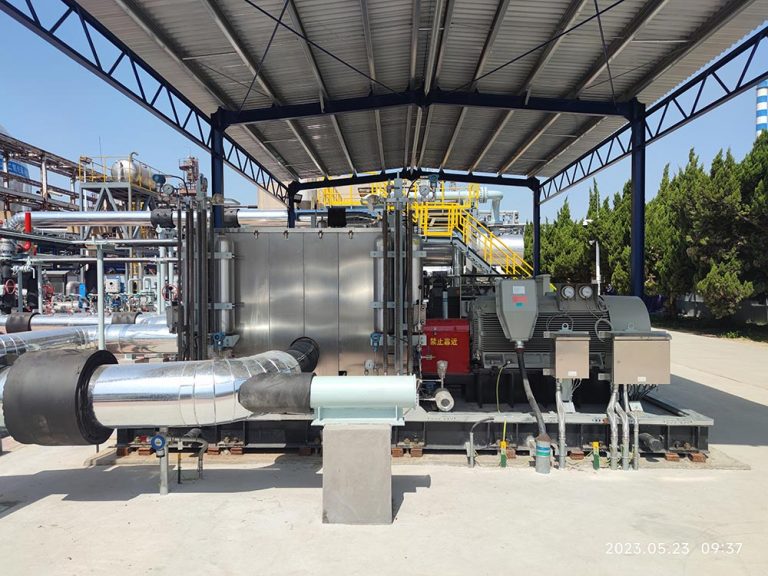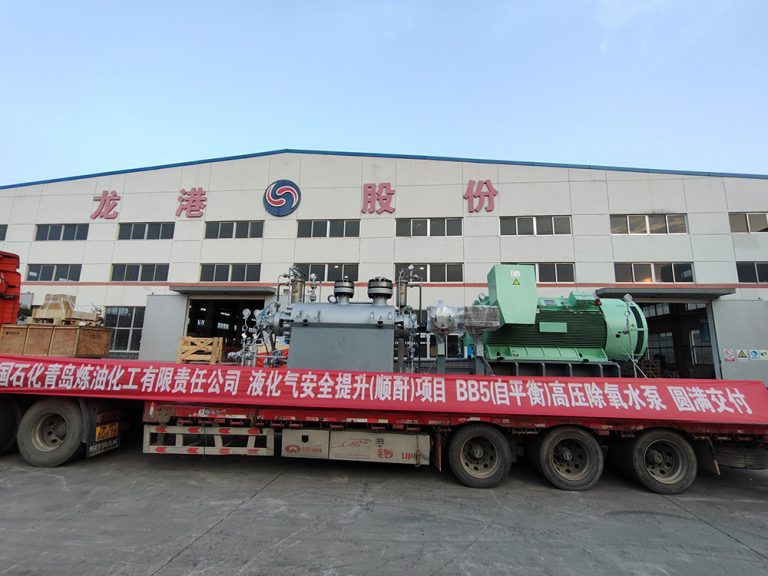In the intricate realm of industrial pumping systems, two main types of pumps prevail: centrifugal pumps and positive displacement pumps. Grasping the core distinctions between these pumps is crucial for an accurate selection process, guaranteeing optimal performance and efficiency across different applications.
Understanding Pump Mechanisms
Operating Principles
Centrifugal Pumps Mechanism
Centrifugal pumps operate based on the principle of imparting kinetic energy to the fluid. This is achieved through a rotating impeller that accelerates the fluid outward from the center of the pump to its periphery. The fluid enters the pump impeller along or near to the rotating axis and is accelerated by the impeller, flowing radially outward into a diffuser or a volute chamber, from where it exits into the downstream piping. The entire process converts velocity into flow, making centrifugal pumps suitable for applications requiring variable flow rates.
Positive Displacement Pumps Mechanism
Positive displacement pumps function by trapping a fixed amount of fluid and then forcing (displacing) that trapped volume into the discharge pipe. This mechanism can be divided into two primary types: reciprocating and rotary. Reciprocating pumps utilize a piston or diaphragm, while rotary pumps employ gears, screws, or vanes. These pumps provide a consistent flow rate regardless of the system pressure, making them ideal for high-viscosity fluids and long-distance transportation.
Application of Principles in Various Industries
In various sectors, the operating principles of these pumps lead to differing functionalities. Centrifugal pumps are widely employed in scenarios where there is a need for low-viscosity fluids and high-flow rates, such as in water treatment plants and HVAC systems. On the other hand, positive displacement pumps excel in handling high-viscosity fluids and precise dosing, making them indispensable in food processing, oil, and gas industries.
Key Differences in Operation
The primary operational distinction is in the management of flow rates and system pressure interactions. Centrifugal pumps offer a variable flow rate based on the system’s pressure, making them ideal for applications that need a wide range of flow adjustments. Conversely, positive displacement pumps ensure a consistent flow regardless of system pressure, delivering stable and predictable performance, which is often essential in chemical dosing or fuel injection systems.
Performance Characteristics
Flow Rate Analysis
Centrifugal pumps exhibit a performance curve where the flow rate inversely affects the system’s head (pressure). As the flow increases, the head decreases, embodying the principle of dynamic response to changes. Positive displacement pumps, however, maintain a linear relationship with flow rate, unaffected by system pressure variations, thereby ensuring precise volumetric flow.
Pressure Variations
In terms of pressure handling capability, centrifugal pumps are designed for varying pressure applications due to their velocity-based mechanisms. They perform efficiently under low to moderate pressure situations. Positive displacement pumps, with their fixed volume per cycle characteristic, can handle high-pressure environments more effectively, making them suitable for high-resistance systems.
Efficiency Comparisons
Energy Consumption
Energy efficiency differs notably between these pump types. Centrifugal pumps tend to offer higher efficiencies at optimal performance points but can suffer losses when operating away from the best efficiency point (BEP). Positive displacement pumps generally show better efficiency across a broad range of operating conditions, especially in viscous fluid applications.
System Integration
When it comes to system integration, centrifugal pumps generally involve less intricate setups but necessitate meticulous attention to the system’s hydraulic properties to prevent inefficiencies. Positive displacement pumps, despite typically requiring more durable designs to manage the mechanical stresses of high-viscosity fluids, are well-suited for systems that demand precise flow control.

Maintenance and Reliability
Common Maintenance Requirements
Wear and Tear Components in Centrifugal Pumps
Regular maintenance of centrifugal pumps includes inspection and replacement of wear-rings, seals, and bearings. Given their high-speed operation, these components are prone to wear and tear, necessitating ongoing maintenance to ensure sustained performance and efficiency.
Typical Maintenance for Positive Displacement Pumps
Maintenance for positive displacement pumps generally includes checking for wear on piston rings, seal integrity, and ensuring the gears or other moving parts are well-lubricated and free of debris. The cyclical mechanical stress demands regular monitoring to preempt premature component failure.
Predicting Lifespan and Reliability
Predicting the lifespan of these pumps involves understanding their operational contexts. Centrifugal pumps often have a variable lifespan influenced by factors such as fluid properties, operational frequency, and system pressure. Positive displacement pumps typically offer more reliable lifespans in consistent operation scenarios due to their steady flow characteristics.
Cost Implications Over Time
Over time, the cost implications can vary widely. Centrifugal pumps often incur higher operational expenses due to fluctuations in energy efficiency and the need for frequent maintenance. On the other hand, positive displacement pumps, despite sometimes having a higher upfront cost, can provide cost advantages in scenarios involving stable, high-pressure, or high-viscosity applications. This is largely because they benefit from predictable maintenance schedules and consistent energy efficiency.
Suitability for Different Applications
Industrial Applications for Centrifugal Pumps
Chemical Processing
Centrifugal pumps are indispensable in chemical processing industries, where they efficiently handle a wide range of chemicals at varying flow rates. Their ability to adapt to changing system conditions while maintaining consistent performance makes them ideal for such dynamic environments.
Water Treatment Plants
In water treatment plants, centrifugal pumps are preferred due to their high flow rate capabilities and efficient handling of clean and low-viscosity fluids. They support the essential infrastructure for large-scale water conveyance and treatment processes.
Industrial Applications for Positive Displacement Pumps
Oil & Gas Industry
Positive displacement pumps serve critical functions in the oil and gas industry, particularly for transporting high-viscosity fluids such as crude oil and providing precise metering in fuel injection systems. Their ability to manage high pressures and flow consistency is crucial in these applications.
Food and Beverage Sector
In the food and beverage industry, positive displacement pumps are favored for their precision and capability to manage different viscosities. These pumps guarantee uniform product quality and meet the rigorous hygiene standards necessary for food processing and packaging activities.
Yantai Longgang Pump Industry Co., Ltd.
In the discourse of industrial pumping systems, particularly within the chemical processing sector, it is imperative to discern the differences between centrifugal pumps and positive displacement pumps. As a chemistry professor, I find it essential to elucidate these distinctions to my students, especially when introducing the exemplary work of Yantai Longgang Pump Industry Co., Ltd.
Centrifugal pumps, such as those manufactured by Yantai Longgang, operate on the principle of imparting velocity to the fluid, which is then converted into flow. These pumps are characterized by a rotating impeller within a casing, which accelerates the fluid outward from the pump’s center to its periphery, and then into the discharge piping system. The flow rate of these pumps is influenced by the system pressure, making them particularly suitable for applications where a variable flow is required.
Yantai Longgang Pump Industry Co., Ltd. specializes in the production of centrifugal pumps that adhere to the rigorous API 610 standard, ensuring their suitability for high-pressure, high-temperature applications often encountered in chemical processing. The company’s centrifugal pumps are designed to handle a variety of chemical substances with efficiency and reliability, while also providing the flexibility needed to adapt to changing system conditions.
Environmental Considerations
Impact on Environmental Sustainability
The importance of centrifugal pumps and positive displacement pumps in promoting environmental sustainability is immense. When optimized, centrifugal pumps typically function with high efficiency, which can help reduce energy consumption and consequently lower the carbon footprint of industrial activities. However, their efficiency can decline if they are not adequately maintained, resulting in increased energy usage and a greater environmental impact. Positive displacement pumps, on the other hand, are capable of handling higher viscosity fluids at consistent flow rates and often maintain better sustained efficiency. This is advantageous for long-term environmental sustainability. By ensuring that these pumps operate within their optimal efficiency ranges, industries can make significant contributions to sustainable practices by minimizing waste and maximizing resource utilization.
Handling of Hazardous Materials
The handling of hazardous materials is a critical area where both centrifugal pumps and positive displacement pumps offer specialized advantages. Centrifugal pumps, particularly those with sealed designs like those produced by Yantai Longgang Pump Industry Co., Ltd., are well-suited for transferring aggressive chemicals safely and efficiently. Their design minimizes leakage risks, which is crucial for environmental protection. Positive displacement pumps, especially those used in precise dosing applications, ensure that hazardous materials are handled with the utmost care, providing precise and controlled transport to prevent spills or unintentional releases. In scenarios where containment and precision are paramount, positive displacement pumps offer a distinct advantage in handling hazardous materials responsibly.
Technological Advancements and Future Trends
Innovations in Centrifugal Pump Design
Recent innovations in centrifugal pump design have aimed at increasing efficiency, reliability, and adaptability to different fluid types and system conditions. Advanced materials and manufacturing techniques have led to pumps with higher tolerances to corrosive and abrasive fluids, extending their operational lifespan. Computational fluid dynamics (CFD) modeling is increasingly used to optimize impeller and volute designs, resulting in pumps with improved hydraulic performance and reduced energy consumption. Additionally, smart technology integration, like IoT-enabled sensors and predictive maintenance algorithms, is being adopted to monitor pump health in real-time, preventing unplanned downtimes and optimizing maintenance schedules.
Enhancements in Positive Displacement Technology
Positive displacement pump technology has also seen significant enhancements in recent years. Innovations include the development of more robust sealing technologies to further reduce leakage and increase the reliability of pumps under high-pressure conditions. The use of advanced coatings and materials has improved the durability of components subjected to mechanical wear, ensuring longer operational life and lower maintenance costs. Variable speed drives (VSDs) have been incorporated to provide more precise control over pump operation, enabling better energy efficiency and adaptability to different application needs. These technological advancements have made positive displacement pumps more flexible and efficient, expanding their applicability in various industrial sectors.
Predicting Future Developments
Looking ahead, the evolution of both centrifugal pumps and positive displacement pumps will likely be driven by sustainability, efficiency, and smart technologies. Future advancements may involve the incorporation of artificial intelligence (AI) for enhanced predictive maintenance and operational optimization. There could be a stronger focus on creating eco-friendly materials and energy-efficient designs to comply with strict environmental regulations. The trend towards modular designs that facilitate customization and simplify maintenance is another possibility. In summary, the future of pump technology is expected to be characterized by innovations that boost performance while reducing environmental impact, in line with the global movement towards sustainable industrial practices.
Final Thoughts on Choosing Between Pump Types
When choosing between centrifugal pumps and positive displacement pumps, it is essential to consider the specific requirements of the application, including fluid properties, pressure conditions, and desired flow rates. Centrifugal pumps are typically more suitable for applications where high flow rates and varying system conditions are the norm, such as in water treatment and HVAC systems. They offer flexibility and efficiency, particularly with low-viscosity fluids. Positive displacement pumps, on the other hand, excel in scenarios requiring precise flow control and handling of high-viscosity or high-pressure applications, such as in the oil and gas industry and food processing.
In conclusion, both pump types have distinct advantages and potential challenges. The decision should be guided by a thorough assessment of the operational environment, the nature of the fluids being pumped, and the long-term maintenance and energy considerations. By selecting the appropriate pump type, industries can ensure optimal performance, reliability, and sustainability in their processes.








